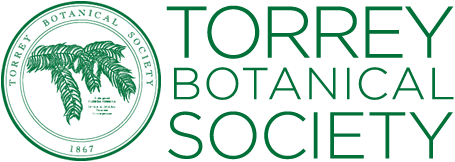Trip Report for Torrey Walk, Corydalis incisa on the Bronx River, Saturday, May 30th. Bronx Park, Bronx, NY
Trip leader: Daniel Atha, 718-514-3922, datha@nybg.org
Participant: Zihao Wang.
We found Corydalis incisa (Thunb.) Pers. growing in several areas between Mosholu Parkway and 207th St. The plants occur in distinct patches, sometimes very dense, other times scattered. Some areas seem to be free of the species. The species was past peak fruiting, most having dehisced already. Very few flowers were present. One large opening about 30 m in diameter and free of woody vegetation was nearly carpeted with the species.
Rorippa indica (L.) Hiern. was collected (Atha & Wang 15092) on Mosholu Parkway (40.869080N, 73.877610W, WGS 84, ±25m). This species has not been seen in New York State since 1949 and was thought to be nonextant.
We observed numerous individuals of Anthriscus sylvestris (L.) Hoffm. Many plants were a about a meter tall. It resembles Conium maculatum, but lacks stem spots and has longer fruit.
We observed a single population of Reynoutria sachalinensis (F. Schmidt) Nakai, between the Bronx Rive and the Bronx River Parkway and north of the Mosholu Bridge.
The invasive Epipactis helleborine (L.) Crantz was seen. Coronopus didymus (L.) Sm. was present, especially around paths and gardens and the species seemed to be more abundant in the Bronx this year than last.
On the bright side we found some healthy populations of Hydrophyllum virginianum and Viola pubescens, both natives. On one edge of the gap dominated by Corydalis there were several majestic Heracleum lanatum W. Bartram, standing about 2 m to the large, white umbels. Carex blanda Dewey and Maianthemum racemosum (L.) Link., showed up occasionally among the herbaceous groundcover. Opposite the Heracleum on the other side of the gap was a large stand of Rumex patientia L. Numerous large and small Fraxinus were observed, some of which were Fraxinus americana L., some possibly also Fraxinus michauxii (Fraxinus profunda).
Polygonatum commutatum (Schult. & Schult. f.) A. Dietr. was common along the trail.
A single Polystichum acrostichoides (Michx.) Schott was seen on a slope above the trail and floodplain terrace dominated by a very large Fagus grandifolia.
